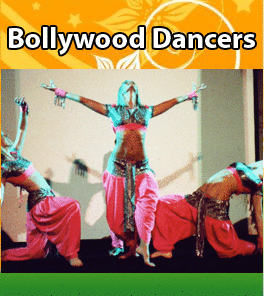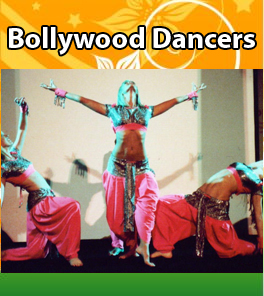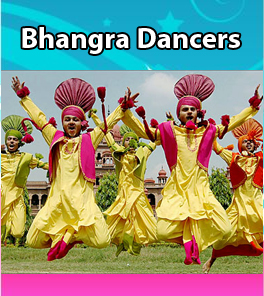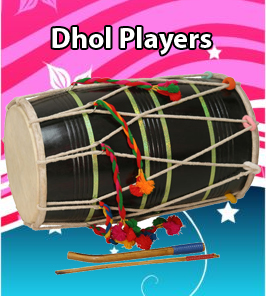When it comes to Bollywood, we often talk about Amitabh, Madhuri, Kareena, Aishwarya, Shahrukh, Hrithik roshan and Abhishek. Now-a-days, Bollywood has become synonymous with Aishwarya – Salman –Vivek triangle or the grand wedding of Ash-Abhishek. We hardly recall any movie whenever we talk about Bollywood. However, there are some classics that are much bigger than these stars and the spicy stories. We have come up with the 10 top biggest Bollywood movies that have left great impressions on the viewers forever. These movies will always remain in our memory.
.
1. Devdas
.
Who can forget Director Bimal Roy’s emotional flick ‘Devdas’, a vivid picture of flaws and emotions in human characters? Released in 1955, rich in imagery and desperation, this cinematic jewel is known for Dilip Kumar’s understated performance as the drunken protagonist blinking hopelessly and painfully love-struck, and some brilliant and poised acting performances by its heroines, Vyjayanthimala Bali and Suchitra Sen.
Devdas (Dilip Kumar) and Paro (Suchitra Sen) are childhood friends who share a love-hate relationship. Each is highly egoistic. These childhood friends grow up to be ardent lovers who are calculated to marry. But Devdas’ father turns down the proposal. Paro gets married to another and Devdas flees to Kolkata falling into bad company and taking to drinking. His friend Chunibabu takes him to the kotha [brothel] where he meets Chandramukhi (Vyjayanthimala). Chandramukhi is touched by the fact that he gives money without wanting anything in return. She falls in love with him. Chandramukhi leaves her profession and changes her life. Though Devdas acknowledges Chandramukhi’s place in his life, he cannot offer her any more. He embarks on a train journey around India in a despairing bid to escape from his demons, from his own self.
.
Dilip already was an established tragedy king when ‘Devdas’ was released, but Vyjayanthimala was still struggling to strengthen her foothold in the industry. It was Bengali cinema’s foremost female star Suchitra Sen’s first Hindi film. The film proved to be a milestone for all the stars. It won Dilip Kumar the Best Actor trophy and a Best Supporting Actress award for Vyjayanthimala. Suchitra Sen got wide acclaim for her performance. Composer S D Burman and lyricist Sahir Ludhianvi gave excellent and still remembered musical notes for the film. The simple, austere, penetrating, candid and passionately electrifying depiction of subtle human values and sentiments is the hallmark of Bimal Roy’s DEVDAS.
.
DEVDAS is based on a Bengali novel and has been remade many times, the most recent being Sanjay Leela Bhansali’s flamboyant remake starring Shahrukh Khan, Aishwarya Rai and Madhuri Dixit. However, this black and white, old cinematic rendition of Chatterjee’s novel is definitely head and shoulders above Bhansali’s colourful and extravagant flick.
.
Dilip Kumar’s demeanor in this heartrending movie is all praise and awe. He was no Dilip Kumar in the film but exact imitation of the role. He outperformed in perfectly getting under the skin of a prodigal Devdas in the first hour of the movie and a profligate Devdas in the last hour. Besides, the very real to life and original performance of Dilip, Suchitra Sen’s weighted speech quality and simple dialog delivery adds resonance to an already touching storyline that goes to the heart of every viewer.
.
The direction of Bimal Roy is superbly excellent and all the more imaginative and original. Roy’s ‘Devdas’ should undoubtedly be regarded as an intellectually perfect cinematic sequence in the history of Indian filmmaking.
.
.
2. Mother India
.
Released in 1957, Director Mehboob Khan’s classic ‘Mother India’ is a moving story of human struggle and one of the masterpieces of Bollywood cinema. The film was a total blockbuster and first major success for Raj Kumar, Sunil Dutt and Rajendra Kumar.
.
As for Nargis (who was only 28 when Mother India was released) it was the performance of a lifetime, a role which any other actress would give an arm for, and sure enough Nargis pulled it off marvelously — from a shy, young bride with painted eyebrows to a mother who turns out to be an epitome of strength – she exudes a moving display of varied emotions.
.
Raj Kumar leaves a lasting impact in a brief but pathos-laden role of Radha’s husband, Shamu. Rajendra Kumar fits in flawlessly to the role of a robust Indian farmer and a quiet, sturdy and supportive son. Dutt is pure, unharnessed energy as the rebel and gave in an excellent performance in the role of a mischievous outlaw.
.
Set in the backdrop of rural India, the film focuses around a mother Radha’s (Nargis) relationship with her two sons Ramu and Birju (Sunil Dutt and Rajendra Kumar). Her husband (Raaj Kumar), who is a farmer, loses his arms after an accident and leaves the house as he doesn’t want anybody’s pity. His wife then has to look after her three sons and tend to the fields. Floods destroy the village and one son falls prey to the calamity. The strong-willed woman shows no signs of giving up. Birju turns into an outlaw but she doesn’t give in even then. She and Ramu fight the circumstances and come out of each trouble. Radha’s test of life reaches its climax when He kidnaps Lala’s daughter. And Radha is forced to replicate Mother Earth’s response to those who violate her laws.
.
Naushad scored in excellent music for this blockbuster.
.
.
3. Mughal-E-Azam
.
Incredible nine years in the making, 16 in the planning, released in 1960 amid much fanfare and a rapturous reception, a tribute to love and struggle……Yes, the movie being talked about is K. Asif’s “Mughal-E-Azam“, a glittering icon of Indian cinema. Along with lavish sets, spectacular dance sequences, breathtaking battle scenes, and pure unadulterated romance, ‘Mughal-E-Azam’ sports a dramatic story as well, weaving conflicts between father and son, love and duty into a gripping tale of thwarted romance. The grandeur of the movie is a visual treat. And not just visual, the film had a fervent musical charm too. Musician Naushad’s tunes on Shakeel Badayuni’s lyrics are immortal.
.
Emperor Akbar [Prithviraj Kapoor] and Queen Jodha [Durga Khote] give birth to a son, Salim, after years of prayer. When Akbar realizes his son is turning into a spoiled, dissolute adolescent by his indulgent mother, the emperor puts him into armor and sends him off to war for the next 14 years. Upon his return Prince Salim (Dilip Kumar), now a handsome war hero falls for the lush-looking yet demure courtesan Anarkali [Madhubala]. Initially wary of his affections because of the difference in their positions, she soon reciprocates his love. Akbar finds out about the affair and that creates a rift between the father and son. The film thus reaches the heart of its matter, the eternal struggle between love and duty, which pits father against son — the Mughal throne cannot be “wasted on a mere slave girl†— and the father against himself — “I am not an enemy of love but a slave to principle.†Not even a military revolt by the son against his father ends the conflict.
.
Breathtaking performance by Dilip Kumar, the raw beauty and innocence exuded by Madhubala, the wide expanse of Asif’s vision, Naushad’s haunting and still remembered musical scores, and above all the grandeur of the film itself- all have gone in to make this movie a real blockbuster.
.
When the color films were introduced in India around 1957, Asif wanted to reshoot everything, but the prohibitive costs of reshooting permitted him to film only three reels of his two-part, three-hour epic in color. As it is, the film cost $3 million, an astronomical sum at that time. (Even today the average Bollywood production costs only $1.3 million). So, only one song – ‘Pyaar Kiya To Darna Kya‘ – is in color in the original film.
.
Widely considered one of Bollywood’s most iconic films, K Asif’s Mughal-E-Azam makes a welcome return to the silver screen 45 years after its initial release. The movie again hit the screens with candy colours and an upgraded Dolby Digital sound, thus becoming the first film in world cinema history to be colourised specifically for a theatrical release. Retaining all its original charm, Mughal-E-Azam’s themes of love, loyalty and sacrifice remain as relevant as ever – a true testament to director K Asif’s vision and commitment.
.
.
4. Deewar
.
“Aaj mere paas building hai, gaadi hai, bank balance hai. Tumhare pas kya hai. Kya hai tumhare pas. ……………. Mere pas … Maa Hai.â€
.
Hardly is there any India movie lover who has not heard this famous dialogue from ‘Deewar’.
Released in the year 1975, starring Amitabh Bachchan, Shashi Kapoor & Nirupa Roy, written by Salim Javed, and directed by none other than Yash Chopra, ‘Deewar’ was a masterpiece which bagged almost all the awards of 1975 Filmfare Awards.
.
Deewaar is probably one of the most memorable Hindi films of all time. The film uses the tried and tested formula of the good brother v/s the bad brother, a mother facing all sorts of hardships to bring up her sons on her own and religious sentiments. What makes the film rise above all others is the tight script and thunderous dialogues from Salim-Javed and above all a powerhouse performance by Amitabh Bachchan as the son driven to crime – perhaps his best ever! The film is one of a series in which he plays the ’angry young man’- the lone rebel, the man seeking personal vengeance and social justice, operating outside and more efficiently than the law.
.
The film also exploits popular religious sentiment and the scene where he submits himself to Goddess in his own egoistic way – “Aaj khush to bahut hoge tum…â€, has become a bookmark in our film industry.
.
As for the storyline, let us flip through our memories once again. Vijay (Amitabh Bachchan) and Ravi (Shashi Kapoor) are two brothers who were raised amidst much hardship by their strong-hearted mother (Nirupa Roy) after their father abandons them. Vijay turns out to be more hot-headed in contrast to soft spoken and polite Ravi. Ravi meets his girlfriend’s (Neetu Singh) father who is a police commissioner and after meeting him he decides to join the police force and leaves for training.
.
On the other hand, Vijay works in a shipping dock where he comes into contact with the underworld and is driven into the world of crime in order to gain quick money for his mother. The two brothers are separated by their duties as one protects the law while the other breaks it. Their mother has to make a choice now, between the two sons. Being an idealist, she chooses to support Ravi. Finally Ravi shoots down Vijay who dies in his mother’s arms.
The film was a superhit when it was released. Amitabh gives a powerhouse performance playing the very serious and disturbed angry man. Shashi Kapoor was impressive as the confused brother. However, his polite and soft performance is overshadowed by Amitabh’s enigmatic persona. Nirupa Roy is just perfect as Amitabh’s Mother who displays enough strength facing all odds. Not to forget the lovely ladies, Neetu Singh and Parveen Bobby who ornate the movie in their own charismatic way.
.
.
5. Sholay
.
Sholay is one of the biggest blockbusters in the history of Bollywood. It is the highest grossing film of all time in India. It ran for 286 weeks straight in one Minerva theatre of Mumbai. Sholay racked up a still record 60 golden jubilees across India, and doubled its original gross over reruns during the late 1970s, 1980s, 1990s and early 2000s.
.
In 1999, BBC India declared it the “Film of the Millennium†In 2005, the judges of the 50th annual Filmfare awards called it the best film of the last 50 years. Ironically, when it was first released, Sholay won only one Filmfare award (film editor M. S. Shinde won for Best editing).
The plot runs as : A retired police officer, Thakur Baldev Singh (Sanjeev Kumar) gets two convicts, Jaidev and Veeru (Amitabh Bachchan and Dharmendra), to capture Gabbar Singh ( The timeless villain of Bollywood), a bandit chief who massacred Thakur’s entire family and cut Thakur’s hands off. Once in the village Ramgarh, both Veeru and Jai fall in love. Veeru is attracted to Basanti (played by Hema Malini), a feisty young woman who makes her living driving a tanga, or a horse-cart. Jai is drawn to Radha (Jaya Bhaduri), the reclusive widowed daughter-in-law. Bloody clashes between Jai, Veeru, and the bandits follow. In the end, the village is freed from the terror of the bandits.
.
The film was produced by G.P. Sippy and directed by his son Ramesh Sippy. It was written by scriptwriters Salim-Javed. R. D. Burman contributed the music. Anand Bakshi was the lyricist. The film was a lavish production for its time. It took two and a half years to make and went Rs. 300,000 over budget. Much of the film was set in the rocky terrain of Ramanagaram, a village near Bangalore. In fact, one part of Ramanagaram town was renamed “Sippynagar†after the director of the movie. Even to this day, a visit to the “Sholay rocks†is offered to tourists travelling through Ramanagaram.
.
The songs from Sholay attract less attention than the dialogues — a rarity for Bollywood. In fact, many movie lovers had got all its dialogues by heart. This prompted the producers to release audio-cassettes with only dialogues. Now, Ramgopal Verma is all set to cash in this blockbuster with his ‘Ramu Ke Sholay’.
.
.
6. Silsila
.
Released in 1981 and made under the crisp direction of Yash Chopra, ‘Silsila’ is still one of the most cherished movies of Bollywood. This movie was billed as a true story when it came out and bears resemblances to the life story of the leading ladies and the hero, Amitabh Bachchan. In real life Amitabh had an affair with Rekha while married to Jaya Bhaduri. The movie created stirs because it dared to handle the subject of extramarital romance when such topics were a taboo in Bollywood. Amitabh and Rekha make a perfect and gripping screen presence each giving a powerhouse performance. Jaya and Sanjeev Kumar steal the applauses by their subtle and mature performances.
.
Amit (Of course Amitabh Bachchan) and Chandni (Lovely Rekha) are badly in love which is grooming fast. Amit is a Poet, Shayaar and writer. Shekhar (Shashi Kapoor), Amit’s elder brother is in love with Shobha (Jaya Bhaduri) and both are about to marry. Shekhar dies in an air crash and leaves behind his pregnant fiancé Shobha. Amit sacrifices his love and decided to give hand to Shobha for her unborn child. Both marry, but fate once more brings Amit face to face with Chandni, who is now married to Dr. Anand (Sanjeev Kapoor). The love that was forgotten and suppressed with time again blossoms up. Both again start meeting and both start forgetting they are now married… Dr. Anand and Shobha both get to know what is happening, but they handle the situated with perfect maturity. Ultimately Amit returns back in the arms of his wife who is pregnant. Dr. Anand and Chandni also live happily thereafter.
.
The duo of Shiv Kumar Sharma and Hari Prasad Chaurasia has given some excellent compositions including ‘Neela Asman’, ‘Dekha Ek Khwab’ and others. The holi song ‘Rang Barse’ of the movie is still a must holi number in our country. This song was sung by Amitabh Bachchan and composed by his father Harivansh Rai Bachchan. Amitabh Bachchan and Lata Mangeshkar recorded their portions of “Yeh Kahaan Aa Gaye Hum†separately. Years later, when they were on friendly terms, they expressed their regret at having to do so when they could have gotten to know each other.
.
.
7. Maine Pyar Kiya
.
Released in 1989, directed by Sooraj Barjatya, this breezy teenage romance attained high acclaim as a melodious, faultless portrayal of innocent first love. ‘Maine Pyar Kiya’ was one of the most successful Bollywood movies of the 1980s and made Salman Khan a major star. The film was a departure from the gritty and violent films that were so popular in the 1970s and early 80s. The debutant Bhagyashree set the screen a fire and captured the attention of every youth. Reema Lagoo redefined the look and character of a mother in Hindi films. She was gorgeous, wore bright colors, dressed glamorously and was yet an affectionate, large-hearted mom.
This film had all the ingredients to click with the Indian milieu by and large. There was an obedient boy, a docile and domesticated girl, some funny and free-spirited souls and the innocent first love blooming in two hearts.
.
The story revolves around Prem(Salman Khan) and Suman (Bhagyashree). HE the son of a multimillionaire, Kishen (Rajeev Verma)… and SHE the daughter of an ordinary motor mechanic, Karan (Alok Nath)… run into each other and cultivate mutual liking which culminates into a call of love….! The blossoming love between Prem and Suman is not taken kindly to by Kishen in whose custody Karan had left Suman when he was going to Dubai to make money. Karan returns to find Suman insulted by Krishen. Severing all past relations, he returns to the village with Suman. How Prem revolts against his father, reaches the village and gets back his love, Suman forms the rest of the story. Finally, it is the integrity of their children’s love that unites the long-lost friends.
The soundtrack of the movie was a huge hit with Lata Mangeshkar and S.P Balasubramaniam lending their voice for Suman and Prem. The immensely popular opening track, ‘Aate Jaate’, is said to have been inspired by Stevie Wonder’s 1984 single, ‘I Just Called to Say I Love You’. Also, the track, ‘Mere Rang Mein Rangne Wali’ is supposedly inspired by ‘The Final Countdown’. The sequence of ‘Antakshari’ was a new experiment and was immnesely popular.
.
Maine Pyar Kiya won four Filmfare awards in 1990. It was dubbed into English as ‘When Love Calls’ ( This 125 minute English version of the film was the biggest hit in the Caribbean market at Guyana) and in Spanish as ‘Te Amo’. The movie was a super hit in Telugu as ‘Prema Paavuraalu’.
.
.
8. Dilwale Dulhania Le Jayenge
.
‘Dilwale Dulhania Le Jayenge’ is in many ways a typical Bollywood film, with songs, dance numbers, comic interludes and lovers cavorting in scenic locations. However, what sets the film apart is the touching and marvellous performance by Shahrukh Khan as Raj, the real-as-life and effortless acting by Kajol and above all, the duo’s on-screen chemistry which sets the romance afire.
.
Released in 1995, DDLJ has created history. As of June 2006, the film had made the record books by completing 570 weeks of continuous play in Maratha Mandir, a Mumbai cinema.
The movie bagged in numerous awards at the filmfare – Best Movie Award (Yash Chopra), Best Director Award (Aditya Chopra), Best Actor Award (Shahrukh Khan), Best Actress Award (Kajol), Best Supporting Actress Award (Farida Jalal) , Best Comedian Award (Anupam Kher) and Best Lyricist Award (Anand Bakshi for the song Tujhe dekha) and Best Male Playback Award (Udit Narayan for the song Mehndi lagake).
.
As like any mega blockbuster of all times, music played a major role in DDLJ’s success. While late Anand Bakshi who wrote the lyrics was a veteran, composers Jatin Lalit were a surprise package as they had just got a foothold in the industry. With Aditya Chopra making his debut as a director and Yash Chopra handling the production reins, DDLJ was designed as a unique musical love story that was equally shot in Europe and India and was billed as the first film portraying the life of Indians residing in foreign countries.
.
The film was included in the Cinema India showcase, “The Changing Face of Indian Cinemaâ€, which toured the United States in July and August 2004.
.
The storyline of the movie goes as follws: Simran meets Raj on a graduation trip and they eventually fall in love. Her father, played by Amrish Puri, wants her to marry his best friend’s son, to whom she has been promised since she was born. After much tear-shedding, Simran finally agrees to the marriage and her family returns to Punjab. Raj, however, does not give up so easily. He follows Simran to the Punjab, but refuses to elope with Simran and wants to marry her with the consent of her father. Raj pretends to be a friend of the family, helping with the wedding preparations and gaining everyone’s friendship including Simran’s father. However everything comes crashing down when Raj’s true identity is revealed. Then, as Raj is preparing to leave, the father realizes that Raj truly and sincerely loves Simran. He allows Simran to leave with Raj, and all ends happily.
.
.
9. Kuch Kuch Hota Hai
.
Kuch Kuch Hota Hai is another blockbuster love-triangle story, produced under the Dharma Productions banner and Karan Johar doing superbly as a debutant director.
.
Shahrukh adds new dimensions to his acting by playing a fatherly role for the first time, Rani Mukherjee has a short and sweet role which she plays flawlessly, and what tops this all is Kajol’s versatile performance which leaves you amazed and fascinated at the same time. The child actress Sana playing Anjali manages to combine the best qualities of a child actress and many of the emotions of an adult.
.
This movie opens with a woman named Tina (Rani Mukherjee) who is dying from a complicated birth. She asks her husband Rahul (SRK) befor dying to name their newborn daughter Anjali (Sana Saeed). On Anjali’s eighth birthday she received the letter written by her long gone dead mother. In this letter, Anjali’s mother Tina explained how she came into her father’s life back in college and they fell in love. This love complicated a friendship between her father Rahul, and his best friend at college, a tomboy girl named Anjali (Kajol). So Anjali left the college so that Tina and Rahul could be together. What little Anjali’s mother wants her daughter to do is find the first Anjali and bring her back together with her father. Anjali, with the help of her grandmother sets out to this goal and achieves it by the end of the movie. This movie is a roller coaster of emotions. You will laugh and you will cry.
.
The music is infectious and choreographer Farah Khan has performed an excellent job. Her comfort level with the three superstars is apparent with the chemistry displayed in each song sequence.
.
The award list for the movie is long with the best movie, best director, best actor, best actress, best supporting actress, best art direction and best screenplay in 1998 Filmfare awards. Shah Rukh also received the best actor award at Zee Cine Awards 1998, Sansui Viewer’s Choice Awards 1998 and Z Gold Bollywood Award 1998.
.
.
10. Lage raho MunnaBhai
.
A movie to watch with your whole family, as seldom do we come across a film which makes us laugh, cry and also makes us feel good as a human being. Thanks to Raj Kumar Hirani, “Gandhigiri†is In and “Dadagiri†is Out. LRM is an experiment in hindi cinema which generates deep message through light-hearted comedy.
.
Munna and Circuit, arguably compared to Laurel and Hardy, go about the business of generating humour out of the pathos of human conditions in a sequel to Munnabhai MBBS. Vidya Balan, Sanjay Dutt, Arshad Warsi and Boman Irani exhibit marvelous performances. The interaction between Munna and Gandhi are just brilliant and both Sanjay Dutt and Dilip Prabhavalkar dazzle in their role. Fans of Abhishek Bachchan were pleased to see him in a cameo towards the end of the movie.
.
Lage Raho MunnaBhai was praised by Manmohan Singh, who stated that the movie “captures Bapu’s message about the power of truth and humanism. Lage Raho Munna Bhai was the recipient of the prestigious 2006 Filmfare Critics Award for Best Movie. It also won the Filmfare Best Story Award (Vidhu Vinod Chopra & Rajkumar Hirani), the Filmfare Best Dialogue Award (Rajkumar Hirani & Abhijat Joshi) and the Filmfare Best Comedian Award (Arshad Warsi).
.
It was awarded Best Film, Best Story, and the Critics Choice/Best Actor (Sanjay Dutt) by both the Star Screen Awards and the Global Indian Film Awards (where it also won the award for Best Dialogue).
Lage Raho Munna Bhai revolves around the comic adventures of Munna Bhai, a Tapori in the Mumbai underworld and his sidekick Circuit. Munna is in love with the voice of Jhanvi (Vidya Balan), a radio jockey and presents himself to her as a professor of history and a Gandhi specialist. To keep up with his lie, Munna engages in a period of intense study of the life and works of Gandhi. It is during this period that the image of Mahatma Gandhi appears offering help and advice to Munna. Indeed, Gandhi continues to appear each time Munna sings Raghupathi Raghava Rajaram.
.
Lucky Singh (Boman Irani), an unscrupulous businessman, wants to seize the ‘Second Innings house’. Turning to Gandhi for help, Munna encourages the residents of Second Innings to use Gandhigiri in an attempt to regain their home.
.
As Gandhi guides Munna Bhai in the cultivation of a new life based upon Gandhism, anyone who comes into contact with Munna is transformed. When Munna saves Lucky Singh’s daughter Simran (Diya Mirza)’s marriage, in gratitude, Lucky Singh returns Second Innings to its residents.
Jhanvi’s opening line for her radio show, “Gooooooood Moooooooorninnnng Mumbai!“, is an homage to Robin Williams’ opening for his radio show (â€Gooooooooood morning, Vietnaaaaaaaaammm!“) in the 1987 film, Good Morning, Vietnam.
.





